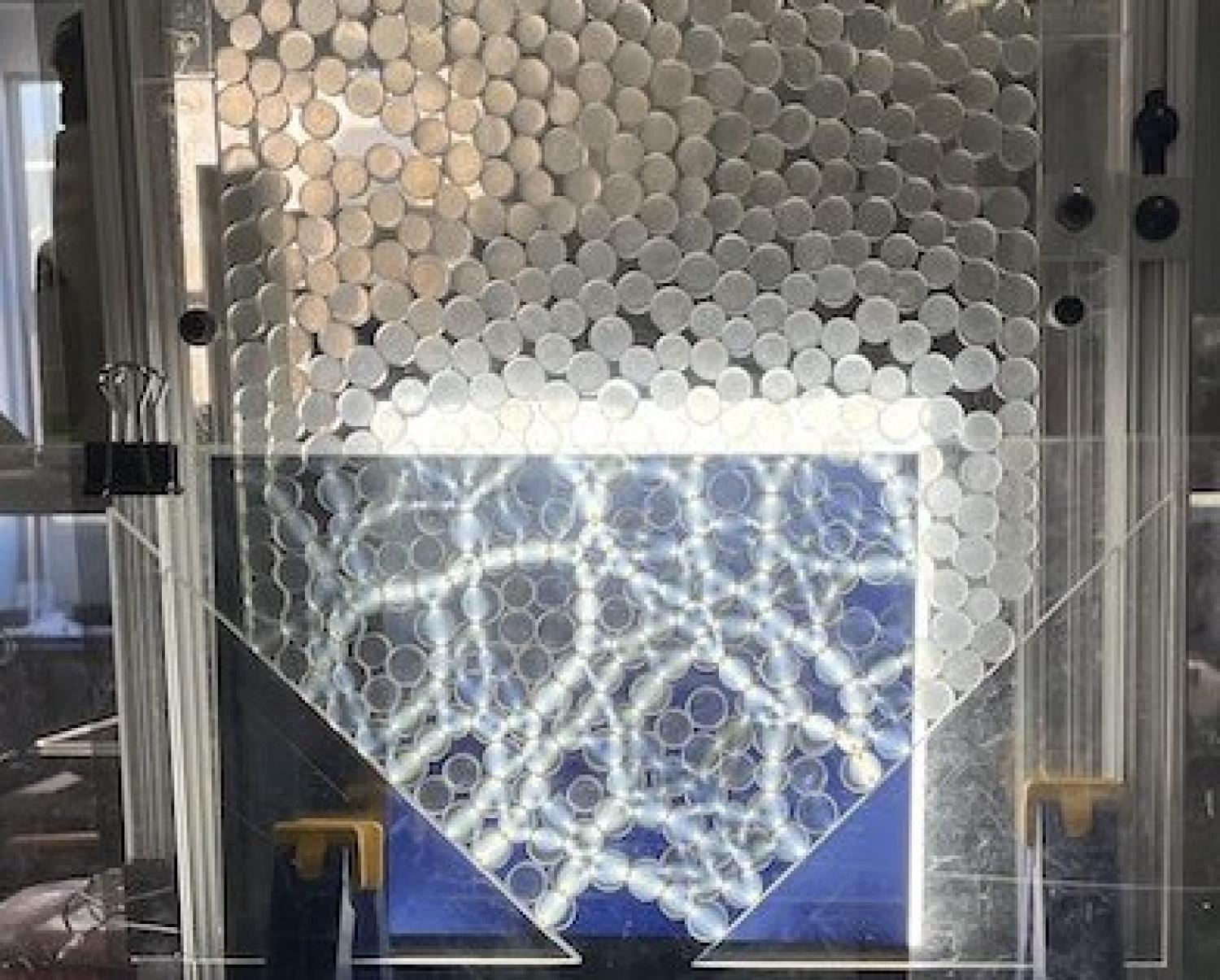Student wins national competition with photoelasticity research
Ben McMillan, a PhD student advised by Associate Professor Nathalie Vriend in the Paul M. Rady Department of Mechanical Engineering, recently took first place in the Gallery of Soft Matter Physics video competition for his research on the internal dynamics of granular flow and its effects on clogging.
The Gallery of Soft Matter Physics is a poster and video competition that showcases the elegance and aesthetics of soft matter, while highlighting the work of the soft matter community to fellow researchers and the general public. The competition was held during the 2023 American Physical Society (APS) March Meeting in Las Vegas, Nevada.
“It is a great accomplishment for Ben to win the award,” Vriend said. “He produced an outstanding video and is one of only two PhD students who won.”
In his laboratory experiments, McMillan uses a technique called photoelasticity that analyzes how patterns of light within polyurethane disks change according to the magnitude and direction of forces exerted upon them. The fluctuating patterns of light can give McMillan a picture of the stress distribution between them.
The winners of the Gallery of Soft Matter Physics receive a cash prize, an opportunity to give an invited talk at the next APS March Meeting in 2024 and are featured in American Physical Society’s journals Physical Review E and in Physics.
In his video, “To Clog or Not to Clog,” McMillan outlines how photoelasticity can predict whether a clog of granular materials attempting to pass through an opening is structurally stable or unstable.
Watch the video here:
[video:https://www.youtube.com/watch?v=CzIv3IkK3_E]
McMillan shared more details about his award-winning video and research:
Can you describe your research?
My research focuses on experimentally investigating granular materials, which are materials made up of grains or particles. We use a technique called photoelasticity, which allows us to visualize and resolve the force on each particle in our experiments.
How will your work impact society?
Clogs occur in a huge array of scenarios, many of which impact us directly. For example, salt shakers, inkjet printers and silos of grains experience clogs, but they can also be dangerous, such as blood clots or crowds of people. Despite their prevalence, our understanding of clogs is poor. We aim to improve our knowledge of clogging fundamentals, which would help design systems to be safer and more efficient.
What is the next step for this project?
Our goal is to be able to predict when a clog will form. To do this, we’re planning to use machine learning ideas to try and find patterns in the force distributions and velocity profiles that occur before a clog happens.


